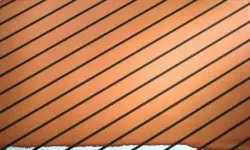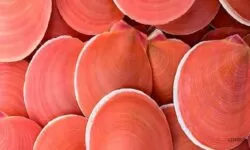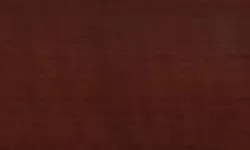Origin and History of Light Ochre Color
Since ancient Greece, light ochre naturally appears as yellow ochre (limonite). Light ochre has been used as a pigment since prehistoric times and is perhaps the most commonly used pigment for artists’ paintings.
Clear Ochre Code: #b9935a
Source
- Clear ochre is a natural earth containing clay stained by hydrophilic forms of iron oxide, such as goethite, and traces of gypsum or manganese carbonate. Historically, clear ochre was referred to as limonite.
- Limonite, however, is not a true mineral, but a general term used to describe all forms of hydrated iron oxide minerals (α-FeOOOH) that occur as natural earth. Limonite includes the minerals goethite, akaganeite, and lepidocrocyte.
- To be considered clear ochre, the iron oxide content must not be less than 12% with varying amounts of kaolin and quartz. Depending on the hydrated iron oxide content, the color of the ochre varies from light yellow to gold.
- Like red iron oxides (hematites), they are found all over the world and have been used as pigments since prehistoric times. French ochre, historically one of the best grades of ochre, contains about 20% iron oxide and has a high silica content.
Clear ochre is not naturally usable as a pigment and therefore needs to undergo several important processes, for example:
- Extracting mineral from quarries.
- Separate the ochre from the sand with water and centripetal force.
- Mix different ochres extracted from different veins to obtain the selected colours.
- Crush to 50 microns and pack.
Permanence and Compatibility of Light Ocher
Light ochre is one of the most permanent colours in the artist’s palette. It is compatible with all other pigments and can be used with good results in all media.
Oil Absorption and Grinding
The ochre absorbs a moderately high amount of oil. The oil absorption ratio is 30-35 parts by weight of linseed oil to 100 parts by weight of pigment. If measured as grams, this pigment would require 30 to 35 grams of pigment to grind 100 grams of flaxseed oil into a rigid paste. It delays the drying of the oil paint, but forms a good film.
Clear Ochre Toxicity
Ochre is not considered toxic, but care must be taken when handling dry powder pigment to avoid inhaling dust.
Related Topics

OCHRE COLOR: Psychology and Meaning. Types and Varieties

GOLDEN OCHRE: Meaning and Code in the Color Table

¿ HOW TO MAKE OCHRE COLOUR ?

RED OCHRE: Composition and Code in the Color Table
Other Colors in Alphapedia

THE BRONZE COLOR: Psychology and Meaning. Types and Varieties

CORAL COLOUR: Types, Psychology and Meaning

DARK WINE COLOR: Psychology, Meaning and Code

MUSTARD COLOR: Psychology and Meaning

BLUE COLOR: Types, Psychology and Meaning

MAHOGANY COLOR: Types, Psychology and Meaning
Other Topics of Interest in ALPHAPEDIA

FREE PHARMACY ASSISTANT COURSE

FREE CONSTRUCTION COURSE

FREE CUTLERY COURSE

FREE MASTER DEGREE IN LANGUAGES

FREE DOCTORATE IN SYSTEMS

FREE DOCTORATE IN TOXICOLOGY
Light Ochre Color Image



